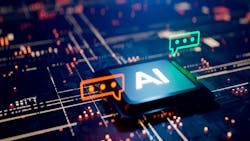What are AI co-pilots?
The emerging trend of co-pilot technologies in the industrial sector aims to revolutionize human-machine collaboration, particularly in manufacturing and processing industries, Automation World reports.
Unlike traditional digital assistants, artificial intelligence co-pilots leverage large language model (LLM) AI technologies, such as ChatGPT, to tackle complex problem-solving and decision-making tasks. They represent a shift from task automation to strategic augmentation, offering broad insight and applicability across various levels of work.
Key features of co-pilots include collaboration, broad applicability and evolving agency, making them integral to enhancing efficiency and productivity in factory settings.
Automation World spoke with Artem Kroupenev from Augury, who emphasized the potential of AI co-pilots in empowering workers with data-driven insights, particularly in predictive maintenance, production optimization, and resource allocation.
These technologies promise to reduce production downtime, meet sustainability goals, and upskill workers, ultimately driving efficiency, innovation and sustainability in manufacturing. However, challenges remain, including the need for reliable and unbiased data, as well as ensuring the trustworthiness and reliability of co-pilots in manufacturing settings.
Automation World explains everything controls engineers need to know about AI co-pilots in this article, available here.

